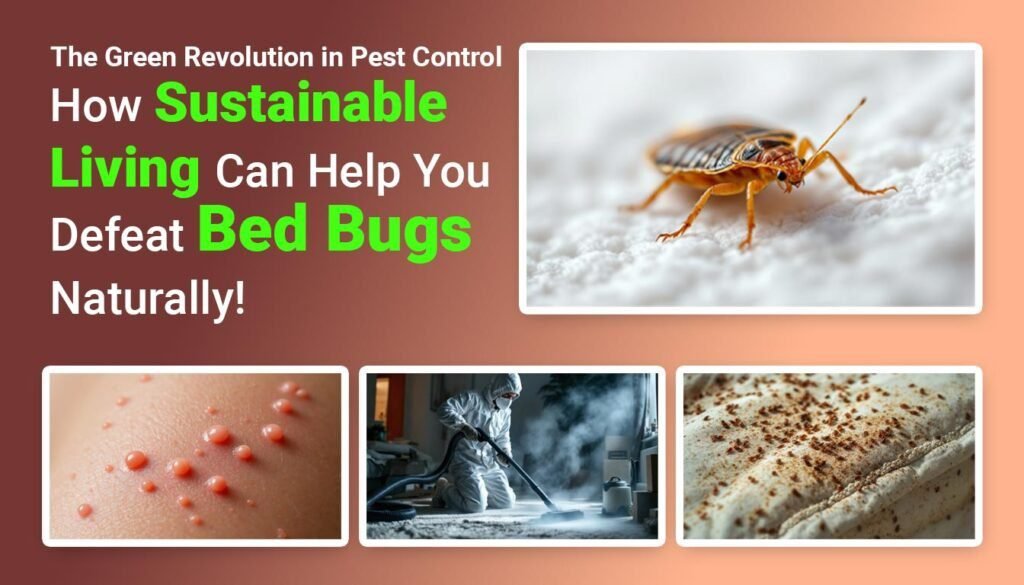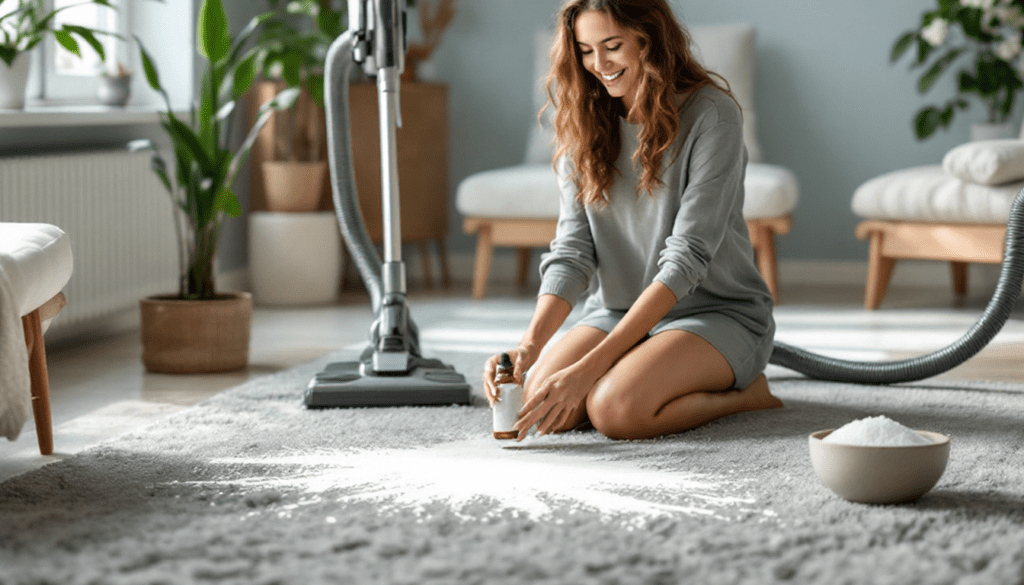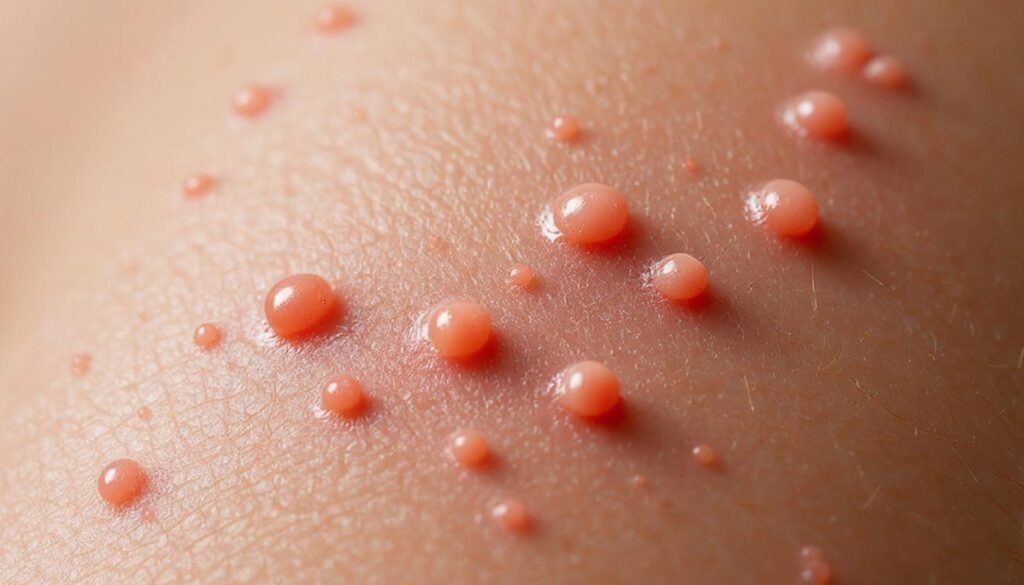
Understanding the Bed Bug Problem
Bed bugs (Cimex lectularius) are small, wingless insects that have become one of the most prevalent pest issues in modern households. Originating from the Middle East, these pests have spread worldwide, thriving in residential and hospitality settings. Their elusive nature and resistance to various control methods have made bed bug infestations particularly challenging to manage.
Adult bed bugs are approximately the size of an apple seed, possessing a flat, reddish-brown body that allows them to hide in crevices during the day. They are nocturnal feeders, emerging mainly at night to feed on the blood of humans and other warm-blooded animals. Each female can lay around five eggs a day, contributing to rapid population growth. Within weeks, these eggs hatch into nymphs, which mature into adults in as little as a month, thereby emphasizing the urgency in addressing infestations.
One significant aspect of the bed bug problem is the common misconceptions surrounding these pests. Many individuals believe that bed bugs are indicative of unclean living conditions; however, infestations can occur in even the most pristine environments. Their ability to travel easily, hitching rides on luggage, clothing, and second-hand furniture, facilitates their spread across various locations. Furthermore, traditional pest control methods, which often rely on harsh chemicals, have proven less effective against bed bugs due to their developing resistance. This highlights the need for integrated pest management solutions, embracing the principles of the green revolution in pest control.
As awareness around eco-friendly practices grows, it becomes essential to explore sustainable and natural solutions for effectively managing bed bug infestations. Understanding the biology, behavior, and impact of bed bugs is crucial in developing long-lasting strategies that not only address current issues but also prevent future outbreaks without solely relying on chemical treatments.
What is Sustainable Living?
Sustainable living refers to a lifestyle that seeks to minimize an individual’s or society’s use of the Earth’s natural resources and personal resources. This practice encourages individuals to reduce their carbon footprint by adjusting daily habits to promote environmental health. Central to sustainable living is the idea of meeting present needs without compromising the ability of future generations to meet their own, particularly in terms of resource consumption and waste management.
In the context of pest control, especially when addressing issues such as bed bugs, sustainable living adopts practices that are both eco-friendly and health-conscious. This integrated approach often emphasizes the use of natural remedies and prevention strategies, reducing the reliance on harmful chemicals that can adversely affect both human health and the environment. For example, embracing practices such as regular cleaning, proper waste management, and the use of natural repellents can drastically reduce the likelihood of bed bug infestations while mitigating risks associated with chemical pest control methods.
Also Read Trending Post
- 20 High Protein Meal Prep Ideas for Weight Loss, Muscle Gain & Busy Lifestyles (2025 Guide)
- Healthy and Sustainable Rooftop Gardening Guide for Beginners: Simple and Effective Methods
- Eco-Friendly Meal Prep Ideas: 10 Essential Tips for Healthy and Sustainable Eating
- Microplastics: Invisible Danger in Our Food, Water, and Environment
- Top 25 Plant-Based Protein Sources Chart: Your Ultimate Visual Guide for a Healthier Diet!
One of the key principles of sustainable living is the reduction of chemical exposure. Many conventional pest control methods rely on potent chemical agents that can disrupt ecosystems and pose health risks. By learning to manage pest problems like bed bugs using alternative strategies, individuals can improve their well-being while contributing to a healthier environment. Additionally, adopting sustainable living practices can enhance an overall quality of life, fostering a connection to nature and cultivating a home that is both safe and welcoming.
Every individual can incorporate sustainable living practices into their daily routines, from opting for organic products to adopting preventive measures that eliminate conditions favorable for pest infestations. As more people embrace this green revolution in pest control, they not only empower themselves but also contribute to a broader movement towards ecological sustainability.
Natural Methods for Bed Bug Control
Bed bugs, notorious for their elusive nature and resilient presence, have prompted the need for effective pest control strategies. In the context of sustainable living, the green revolution in pest control offers numerous natural methods for managing these infestations. By employing eco-friendly practices, individuals can safeguard their homes while minimizing the environmental impact.

One of the first lines of defense against bed bugs is adopting rigorous cleaning techniques. Regularly vacuuming carpets, mattress seams, and upholstered furniture can significantly reduce bed bug populations. It is essential to dispose of the vacuum bag immediately after use to prevent any surviving eggs or bugs from reinfesting your home. Furthermore, washing bedding and clothing in hot water can eliminate these pests. A thorough inspection of second-hand items before bringing them indoors can also help prevent an infestation.
The use of essential oils is another method gaining popularity in the green revolution in pest control. Oils such as tea tree, lavender, and peppermint possess properties that can repel bed bugs. Diluting these oils in a spray bottle with water allows for easy application on luggage, furniture, and other areas where bed bugs may reside. The pleasant scents not only deter pests but also refresh the living space.
Heat treatment is a highly effective method to eradicate bed bugs. This technique involves raising the temperature in an infested area to a level that is lethal for bed bugs. For instance, using specialized heat chambers or portable heaters can help achieve this goal. Alternately, placing infested items in a hot car on a sunny day can also be beneficial.
In addition to these methods, creating an inhospitable environment for bed bugs is crucial. Sealing cracks and crevices, using mattress encasements, and decluttering living spaces all contribute to preventing infestations. By practicing these natural and sustainable strategies, individuals can effectively manage bed bugs while participating in the green revolution in pest control.
Creating a Sustainable Pest Control Plan
Developing a sustainable pest control plan is crucial in harmonizing effective management of pests such as bed bugs with environmentally-friendly practices. To begin, it is essential to evaluate your current pest control strategies and identify any areas that may require improvement. This assessment may include examining the methods and products currently in use, their efficacy in controlling bed bugs, and their potential impact on the environment.
Once you have evaluated your existing practices, create a checklist to outline the steps needed to align your pest control efforts with green principles. This checklist should include measures such as sealing cracks and crevices, reducing clutter, utilizing heat treatment, and adopting natural repellents. Additionally, monitoring systems should be incorporated. This can involve periodic inspections to identify signs of bed bug activity and implementing traps to detect their presence before outbreaks occur.
Education is key to maintaining a bed bug-free environment. Become familiar with the biology of bed bugs, their habits, and effective control methods. Sharing this knowledge within your household enhances collective efforts in keeping your space pest-free and helps inculcate sustainable values among family members. Furthermore, consider engaging with community resources such as local pest control professionals who understand and support the principles of the green revolution in pest control.

It is paramount to adopt a proactive approach and seek continuous improvement in your pest management practices. Ensuring your home remains free from bed bugs while adhering to sustainable living principles not only contributes to an eco-friendly lifestyle but also fosters a healthier living environment. This ongoing commitment involves staying informed about the latest developments in natural pest management techniques and adjusting your strategies accordingly, paving the way for long-term success in combating bed bugs naturally.
My Personal Experience with Bed Bugs
Dealing with bed bugs is something I never imagined I’d experience. It’s the kind of problem you hear about from others and think, “That’ll never happen to me.” Unfortunately, I learned the hard way that bed bugs don’t discriminate—they can find their way into any home, regardless of cleanliness or lifestyle. Here’s my story and what I learned from the ordeal.
It began innocently enough. After a short vacation, I noticed a few small red bumps on my arms. At first, I thought they were mosquito bites or a mild allergic reaction. But as days passed, the bites became more frequent, appearing in clusters and causing intense itching.
I started to suspect something was wrong, and a quick online search led me to one horrifying possibility: bed bugs. My heart sank as I lifted my mattress and found the telltale signs—tiny black specks, shed skins, and, to my horror, a few live bed bugs.
Discovering bed bugs in your home feels like a violation. I struggled with a mix of emotions—embarrassment, frustration, and anxiety. I worried about the stigma and what people might think if they found out. At night, I couldn’t sleep peacefully, constantly imagining bugs crawling around me. The mental toll was as exhausting as the physical discomfort.
Steps I Took to Address the Problem
Once I accepted the situation, I knew I had to act quickly. Here’s what I did to tackle the infestation:
- Immediate Cleaning and Decluttering
I stripped my bed of all linens and washed them in hot water. Every pillowcase, blanket, and sheet went through a high-heat dryer cycle. I also decluttered my bedroom, removing unnecessary items where bed bugs could hide. - Vacuuming and Steaming
I vacuumed every corner of my home, paying special attention to the mattress, baseboards, and furniture. A handheld steam cleaner became my best friend, as high heat effectively kills bed bugs and their eggs. - Using Diatomaceous Earth
Based on research, I applied diatomaceous earth—a natural powder that dehydrates bed bugs—to cracks and crevices. It worked slowly but surely, reducing the population over time. - Seeking Professional Help
Despite my efforts, I realized that bed bugs are incredibly resilient. I eventually called a professional pest control service. They performed a heat treatment, raising the temperature in my home to eliminate every last bug. This was the most effective solution and gave me peace of mind.
Lessons Learned
Looking back, the experience taught me valuable lessons:
- Travel precautions are crucial. Bed bugs often hitchhike in luggage, so inspecting and cleaning my bags after trips has become a habit.
- Early detection is key. Recognizing the signs early can prevent a small problem from becoming a major infestation.
- Don’t let embarrassment stop you from seeking help. Bed bugs are more common than you might think, and there’s no shame in asking for assistance.
Now that my home is bed bug-free, I take every precaution to ensure they don’t return. I regularly inspect my bedding and furniture, avoid bringing secondhand items into my home, and stay vigilant during and after travel.

While the experience was stressful, it also gave me a greater appreciation for the comforts of home and the importance of being proactive. If you’re dealing with bed bugs, know that you’re not alone, and with persistence, you can overcome the problem just like I did.
Bed bugs are a challenge, but they’re not insurmountable. If you find yourself in a similar situation, remember to act quickly, stay patient, and don’t hesitate to seek professional help. The relief of regaining control of your home is worth every effort.
FAQs on Bed Bugs: Everything You Need to Know
Bed bugs are a common yet often misunderstood problem. Below are detailed answers to frequently asked questions about bed bugs their impact on humans, how to identify them, and the best ways to get rid of them.
1. Are Bed Bugs Harmful to Humans?
Bed bugs are not known to transmit diseases, but they can cause a range of health issues and discomfort. Their bites often lead to:
- Itchy red welts: These can cause significant irritation and scratching, sometimes leading to infections.
- Allergic reactions: Some people may develop swelling or hives in response to the bites.
- Sleep disturbances: The anxiety of an infestation can disrupt sleep and lead to stress.
While not directly harmful the psychological and physical effects of an infestation should not be underestimated.
2. What Are the First Signs of Bed Bugs?
Identifying bed bugs early is key to effective treatment. Watch for these common signs:
- Bite marks: These typically appear in a line or cluster on exposed skin.
- Small blood stains on sheets: These occur when bed bugs are accidentally crushed.
- Dark spots on bedding or furniture: These are bed bug feces and may have a foul smell.
- Molted skins or eggshells: These are signs of bed bug growth and reproduction.
- Live bed bugs: These are tiny, reddish-brown insects about the size of an apple seed.
Early detection can save you from a more severe infestation.
3. What Causes Bed Bugs to Come?
Bed bugs are not attracted by dirt or filth but by warmth and carbon dioxide, which humans exhale. Common causes include:
- Travel: Staying in hotels or using shared transport can introduce bed bugs into your home.
- Used furniture: Infested secondhand items are a primary source of bed bugs.
- Shared spaces: Dormitories, hospitals, and apartments are hotspots for infestations.
Regular inspections and cleaning can minimize the risk of bringing bed bugs into your home.
4. How Do You Remove Bed Bugs?
Getting rid of bed bugs requires a combination of methods, including:
- Declutter your space: Remove unnecessary items where bed bugs can hide.
- Wash and dry fabrics: Use hot water and a high-heat dryer cycle for bedding, curtains, and clothes.
- Vacuum thoroughly: Pay special attention to cracks, crevices, and upholstery.
- Use steam treatment: High heat effectively kills bed bugs and their eggs.
- Apply diatomaceous earth: This natural powder dehydrates and kills bed bugs.
For severe infestations, hiring a professional pest control service is often necessary.
5. Bed Bugs Treatment Options
Bed bug treatments vary based on the severity of the infestation. Common approaches include:
- Chemical treatments: Pesticides can be effective but should be used with caution to ensure safety.
- Heat treatments: Professionals use specialized equipment to raise room temperatures and eliminate bed bugs.
- Freezing treatments: Extreme cold can also kill bed bugs.
- Natural remedies: Essential oils like tea tree or lavender can repel bed bugs, though they are less effective for infestations.
Combining treatments often yields the best results.
6. What Do Bed Bug Bites Look Like?
Bed bug bites are distinct and often appear as:
- Small red welts: These are slightly raised and itchy.
- Clustered or linear patterns: Bites often appear in a row or group.
- Inflamed or swollen areas: Particularly in sensitive individuals.
Bites commonly occur on exposed areas like the arms, legs, neck, and face.
7. How to Check for Bed Bugs?
Follow these steps to detect a bed bug infestation:
- Inspect bedding and furniture: Look for live bugs, stains, or molted skins.
- Check seams and crevices: Bed bugs often hide in mattress seams, headboards, and furniture joints.
- Use a flashlight: This can help you spot them in dark corners.
- Place interceptors: Use bed bug traps under bed legs to monitor activity.
Regular inspections are crucial, especially after travel or purchasing secondhand furniture.
8. What Kills Bed Bugs Instantly?
For immediate results, consider these options:
- Heat: Exposure to temperatures above 120°F (49°C) will kill bed bugs on contact. Use a steamer or dryer.
- Isopropyl alcohol: This can kill bed bugs and their eggs but must be used with caution due to flammability.
- Insecticides: Use products labeled specifically for bed bugs.
- Vacuuming: While it won’t kill them instantly, it effectively removes bed bugs from surfaces.
Professional heat treatments are the most efficient way to eliminate bed bugs quickly.
9. Bed Bug Spray: Does It Work?
Yes, bed bug sprays can be effective, but their success depends on:
- Correct application: Spray directly on infested areas and hidden crevices.
- Ingredients: Look for sprays containing pyrethroids or pyrethrins.
- Persistence: Some sprays have residual effects, killing bed bugs over time.
Always follow the manufacturer’s instructions for safe and effective use.
10. How Can You Prevent Bed Bugs in the Future?
Prevention is key to avoiding another infestation. Adopt these habits:
- Inspect luggage: After travel, check your bags and clothes for bed bugs.
- Avoid secondhand furniture: Or thoroughly inspect and clean before bringing it home.
- Seal cracks and crevices: This reduces hiding spots for bed bugs.
- Maintain cleanliness: Regularly wash bedding and vacuum furniture.
Preventive measures will save time, money, and stress in the long run.
Conclusion
Bed bugs are a challenging but manageable problem when approached with the right knowledge and tools. From understanding their habits to implementing effective treatments, staying proactive is your best defense. With natural remedies and professional assistance, you can enjoy a bed bug-free home while contributing to a more sustainable lifestyle.
By following these tips and staying vigilant, you’ll be better equipped to tackle bed bugs and keep them from invading your space again.











